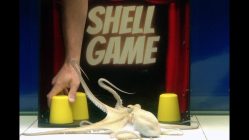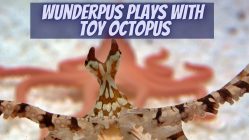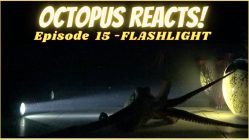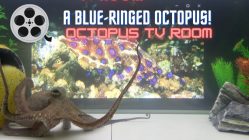
The white-spotted octopus belongs to the genus of Callistoctopus, which is very similar to the Octopus genus with their main difference being that species of the genus Octopus are active during the day whereas the species of Callistoctopus are nocturnal and are therefore often called night octopuses. All Callistoctopus species are characterized by the red coloration, white spots, and long arms.
Callistoctopus Macropus, commonly known as the Atlantic White-spotted octopus, or white-spotted octopus, or Grass octopus or Grass scuttle, was first described by naturalist Joseph Antoine Risso in 1826.
Atlantic White-spotted Octopus
- Scientific Name : Callistocopus macropus
- Common Name: Atlantic white-spotted octopus, white-spotted octopus, Grass octopus or Grass scuttle
- Size: maximum length 120 to 150 cm
- Weight: 2.0 kg
- Lifespan: 1-2 years
- Found in: temperate and tropical waters
- Sub-Order: Incirrina
- Discovered: 1826
- Scientific Name : Callistocopus macropus
- Common Name: Atlantic white-spotted octopus, white-spotted octopus, Grass octopus or Grass scuttle
- Size: maximum length 120 to 150 cm
- Weight: 2.0 kg
- Lifespan: 1-2 years
- Found in: temperate and tropical waters
- Sub-Order: Incirrina
- Discovered: 1826
The Atlantic white-spotted octopus is an entirely nocturnal species. The most distinctive characteristic of Callistoctopus macropus is the red color of its body along with the white spots.
—Distribution and Habitat—

The Atlantic white-spotted octopus has a wider distribution than its name suggests. It is commonly found in the shallow waters of the Mediterranean Sea, and in the warm parts of the eastern and western Atlantic Ocean, the Caribbean Sea, and the Indo-Pacific sea.
As it is a shallow-water species, it is usually encountered near the shores at a depth of around 15 to 20 meters. However, it can be encountered even deeper, as deep as 100 meters beneath the sea surface.
It enjoys hiding in seagrass meadows, that is why it is also known as the Grass Octopus. It inhabits both rubble and sandy bottoms, and when threatened it will sometimes burry itself in the sand.
When hunting, during nighttime, it can also be found around coral reefs, searching for prey hiding in the corals.
—Physical Appearance—

The white-spotted octopus is a medium to large species, with most individuals being approximately 80 cm long, and with the maximum length observed being 1,5 meters.
The most distinctive characteristic of Callistoctopus macropus is the red color of its body along with the white spots. Its body and arms is long, with the first pair of arms being the longest and strongest. It also has shallow webbing among the arms.
Having longer arms than common octopuses means that the Atlantic white-spotted octopus also has a larger number of suckers.
—Behavior—

Unlike the common octopus, which has been observed to adapt the time of the day when it is more active according to the conditions of the environment (such as, the presence of predators, or the introduction of artificial light), the Atlantic white-spotted octopus is an entirely nocturnal species. It will go hunting during nighttime and stay hidden during the day, making it a rare spectacle to all but night divers.
This species will hunt by wrapping its mantle around a rock or coral and by searching all around the rock with its long arms. Smaller organisms, which are discovered in this way and removed by the octopus’ arms will become prey for other fish, such as Groupers, that have been observed to hunt cooperatively with the Atlantic white-spotted octopus.
—Spawning and Conservation Status—
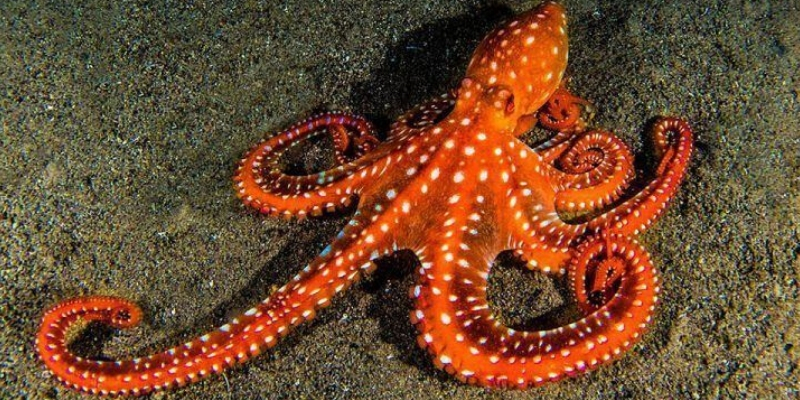
The females of the species will lay over 1000 eggs that will hatch about two months later. The size of the eggs are 1.2 mm. The eggs will hatch during a two weeks period and the 5.5 mm long hatchlings (which are bigger than most species) will go through a planktonic stage before becoming benthic.
As the Atlantic White-spotted octopus has no gastronomic, and therefore, no economic value, it is currently not an endangered species.
—The Atlantic White-spotted Octopus as a Pet—

This is not a very easy species for beginners. First of all, as it is a considerably large octopus, it needs a big tank to feel comfortable in. Even if you have a large aquarium with a capacity of 150 gallons, when the Atlantic white-spotted octopus reaches its maximum size, it might feel a bit claustrophobic.
The second problem of this species is that there are more picky eaters than common octopuses and might only accept live food. Therefore, if you are thinking about adopting one, make sure you have a steady supply of live fish or crustaceans available.
Last, but not least, as this is an exclusively nocturnal species, you will get to enjoy your pet only during nighttime.
If, nevertheless, you are planning on having a white-spotted octopus as a pet, remember that is enjoys hiding among plants and hunting in the coral reefs and decorate your tank accordingly.





